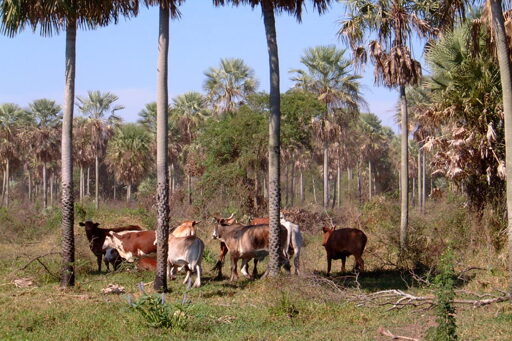A recent study has identified how cattle pasture and agricultural expansion, driven by global demand for beef and soy, is causing biodiversity loss in the Gran Chaco region of Argentina and Paraguay. The Gran Chaco, the second-largest forested region in South America, after the Amazon, is spread across Argentina, Paraguay, Bolivia and Brazil. Over the past 30 years, more than 19 million hectares (47 million acres) of the Chaco were lost to pasture and agricultural expansion, mainly for beef and soy. To find out how this forest conversion has affected biodiversity in the Argentinian and Paraguayan Chaco, researchers created maps of where 47 key mammal species had declined from 2008-2018. They overlaid these on maps of agriculture and pasture expansion during the same period. The analysis showed that conversion of forest into pasture was associated with greater biodiversity loss than cropland expansion. The researchers also found that 15 soy- and beef-producing Argentinian and Paraguayan provinces in the Chaco were associated with biodiversity declines. Upon tracing the supply chains of the commodities as of 2018, they found that the domestic consumption of both commodities was a key driver of biodiversity loss. The European Union, Vietnam and China were among Argentinian soy importers driving the greatest biodiversity decline in the Chaco. Among importers of Paraguayan beef, Chile, Russia and Israel were the top nations contributing to biodiversity loss. The EU had a disproportionately high impact on biodiversity decline associated with Argentinian soy. The authors write this was not surprising as the EU…This article was originally published on Mongabay
From Conservation news via this RSS feed


